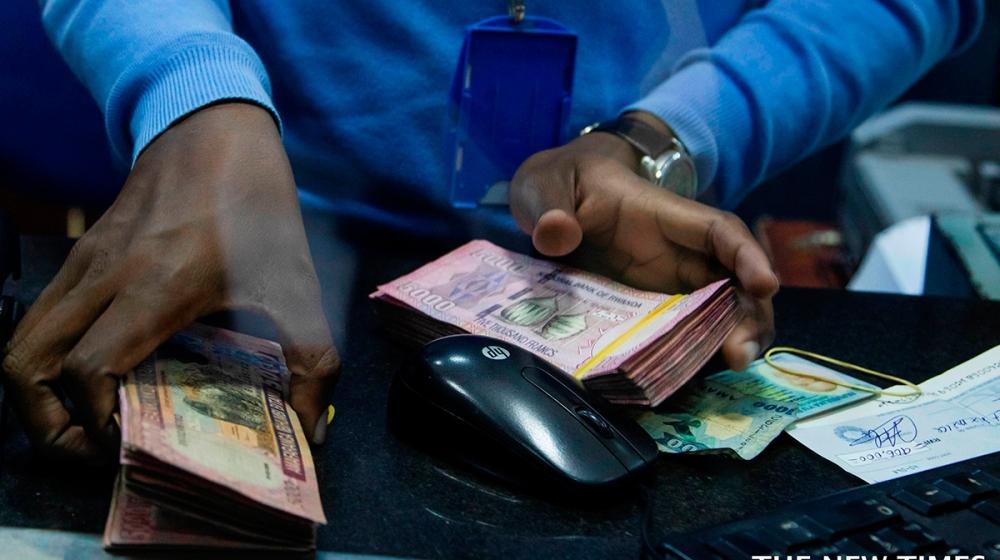Africa-Press – Rwanda. In light of global economic challenges and unfavourable weather conditions faced in 2022, Rwanda’s economy grew by 8.2 per cent, following a 10.9 per cent growth rate registered in 2021.
The National Bank of Rwanda recently announced key economic developments in 2022 through its Monetary Policy Committee and Financial Stability Statement (MPFSS) released on March 29.
Below are some key highlights.
1. Exports revenue up by 33.2 per cent
The export receipt amounted to $1,555.6 million, a 33.2 per cent increase from $1,167.8 million in 2021, mainly driven by commodity prices and strong domestic manufacturing activities exported in the region.
Traditional exports such as minerals, coffee and tea registered a 27.7 per cent growth while non-traditional exports (manufactured products and horticulture) increased by 26.8 per cent and re-exports by 39.3 per cent.
On the other hand, the import bill into the country also grew by 26.9 per cent amounting $4,060 million from $3,201million in 2021 linked to the continued domestic recovery of the economy.
Imports value of consumer goods, intermediary goods and energy increased by 21.6 per cent, 23.0 per cent and 92.1 per cent respectively. In volume terms, their increase was 19.1 per cent, 14.2 per cent and 27.4 per cent respectively.
This has consequently widened the trade deficit by 20.7 per cent amounting to $2,459.5 million.
2. Franc depreciated by 6.5 per cent
Following the recovery of domestic economic activities that necessitated high intermediate and capital imports, the increase in international commodity prices, together with the strengthening of the US dollar, the local currency depreciated by 6.5 per cent from 3.8 per cent in 2021.
However, during the same period, the Central Bank reported that the FRW attracted gains against other major currencies, with an appreciation of 5.3 per cent, 0.04 per cent and 7.9 per cent versus the Pound, the Euro and the Japanese Yen, respectively.
Regionally, the Franc remained strong against the Kenyan Shillings while it weakened against the TZS, the BIF and UGS.
3. Teacher loans increased MFIs credit book
The outstanding credit in Umwalimu SACCOs increased by 37.6 per cent in 2022, up from 22.5 per cent in 2021.
“When the teachers’ salaries were increased last year, their demand for loans was really high. So, we saw an exponential growth of loans to teachers and that’s what is driving this increase in outstanding loans of microfinance institutions,” John Rwangombwa, Central Bank Governor explained.
The outstanding credit in Microfinance Institutions significantly increased by 38.1 per cent to Rwf324.8 billion in 2022, up from Rwf235.2 billion.
The improved growth of loans in microfinance sector largely reflects increased deposits, improved asset quality, that induced lending appetite and the recovery of small and medium businesses that bank with MFIs, hence the growth in credit demand, reads the statement.
4. Risks associated with automobile insurance
Number of motor accidents soared from 6,351 in 2020 to 14,591 in 2020, and 17,179 in 2022. This is while the number of people who died in accidents in 2022 increased to 729 from 655 in the previous year.
This increase in accidents has consequently increased the claims of motor insurance, worsened by the increase of prices of spare parts. Motor claims increased from Rwf21.1 billion in 2021 to Rwf24.9 billion in 2022.
Rwangombwa said they are working with stakeholders involved to avoid its negative impact on the insurance sector, as was the case in 2018.
Generally, the insurance industry saw a decline in claims ratio from 67 per cent to 62 per cent, driven by a reduction in medical claims.
Annie Nibishaka, managing director of Rwanda Insurers Association (ASSAR), attributed this reduction of medical claims to different engagements with their members to educate them on the insurance they have, their limits and how it contributes to the loss issues they face.
In addition, she said that the co-payment model of 10 per cent of medical bills has largely contributed to the reduction in medical claims.
5. Inflation to decelerate
Overall, the rise in commodity prices grew to 13.9 per cent in 2022 from 0.8 per cent in 2021.
Throughout the year, the rise in core food inflation from 4.6 per cent in 2021 to 24 per cent in 2022 is in line with international food prices, especially for sugar, rice, cooking oils, cereals and flours and poor domestic agricultural production.
This is also reflected in the rise in prices of hotels and restaurants with the upticks in the prices of foods and drinks menus from 2 per cent to 14.8 per cent.
Similarly, the increasing trend observed in transport inflation from -4.9 per cent to 6.8 per cent originates from the surge in prices of cars consistent with the rise in the costs of manufacturing cars, according to Central Bank’s metrics.
The rise in energy inflation was mostly reflected in both solid and liquid fuels inflation rising to 18.8 per cent from 0.0 per cent and to 33 per cent from 8.7 per cent respectively.
Rwangombwa pointed out that they are confident that prices will oscillate back within the Central bank’s range between 2 and 8 per cent against a benchmark of 5 per cent in the second half of 2023.
For More News And Analysis About Rwanda Follow Africa-Press






